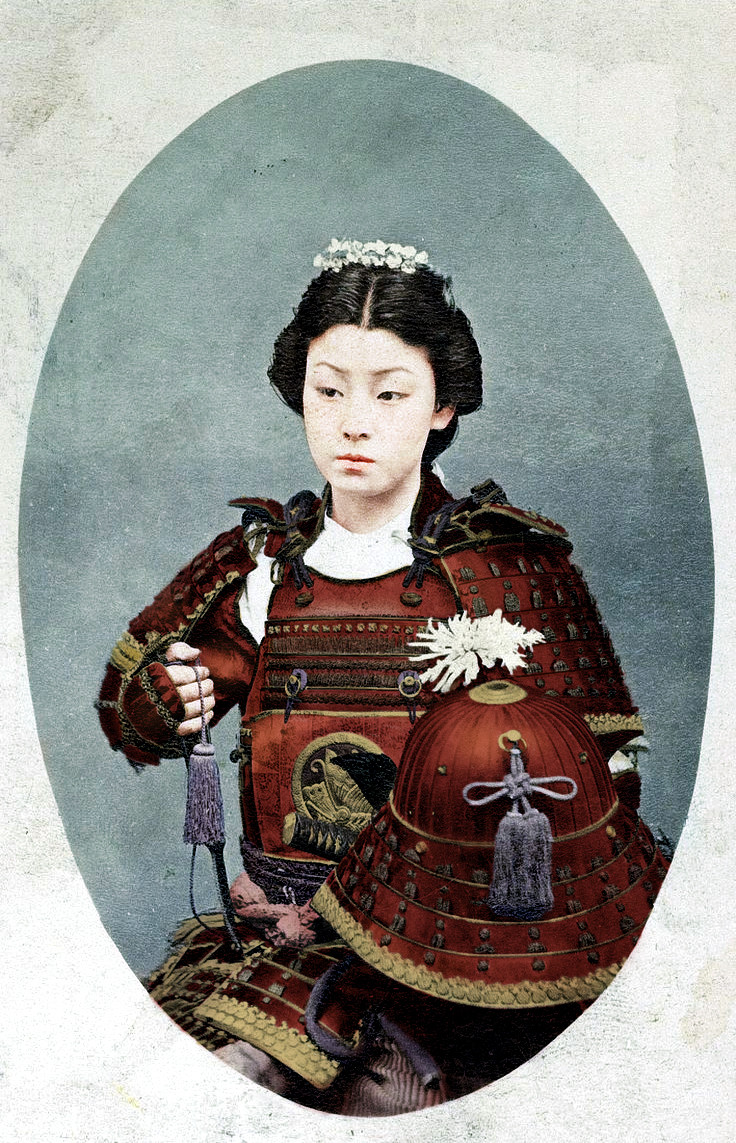
Most of my generation’s exposure to Japanese culture came heavily mediated by anime and samurai films. One cultural artifact that stands out for me is TV miniseries Shogun, an adaptation of James Clavell’s popular novel, which gives us a view of Japan through the eyes of a British novelist and his British hero (played by Richard Chamberlain in the film). Shogun depicts a feudal Japanese warrior culture centered on exaggerated displays of masculinity, with women operating in the margins or behind the scenes.
Even the great Akira Kurosawa’s visions of feudal Japan, like The Seven Samurai, are “not exactly inundated with the stunning power of female warriors brandishing katanas,” writes Dangerous Minds, “it’s a bit of a ソーセージ-fest.”
And yet, it turns out, “such women did exist.” Known as onna bugeisha, these fighters “find their earliest precursor in Empress Jingū, who in 200 A.D. led an invasion of Korea after her husband Emperor Chūai, the fourteenth emperor of Japan, perished in battle.” Empress Jingū’s example endured. In 1881, she became the first woman on Japanese currency.
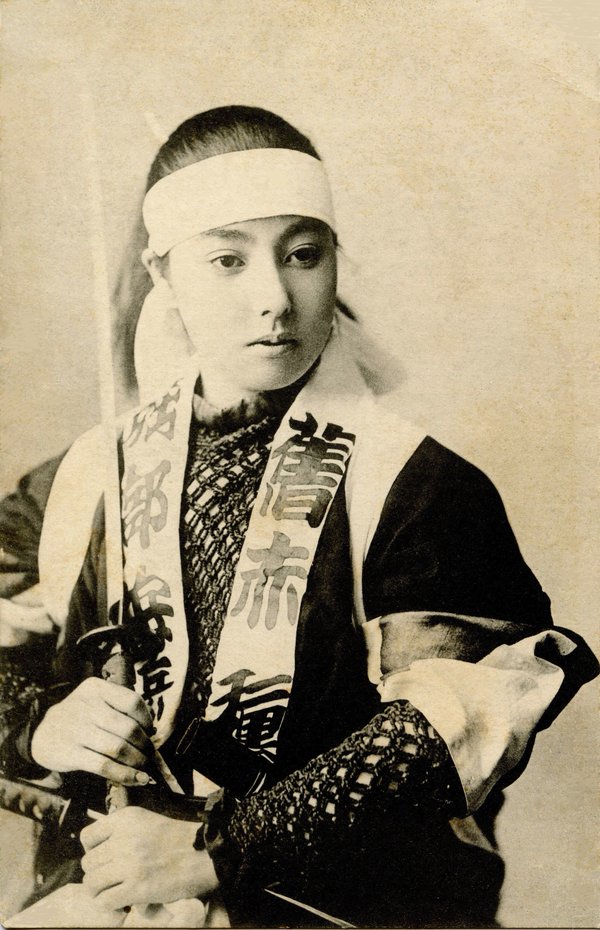
Preceding the all-male samurai class depicted in Clavell and Kurosawa, the onna bugeisha “learned to use naginata, kaiken, and the art of tanto Jutso in battle,” the Vintage News tells us. Rather than pay mercenaries to defend them, as the terrified townsfolk do in Seven Samurai, these women trained in battle to protect “communities that lacked male fighters.”
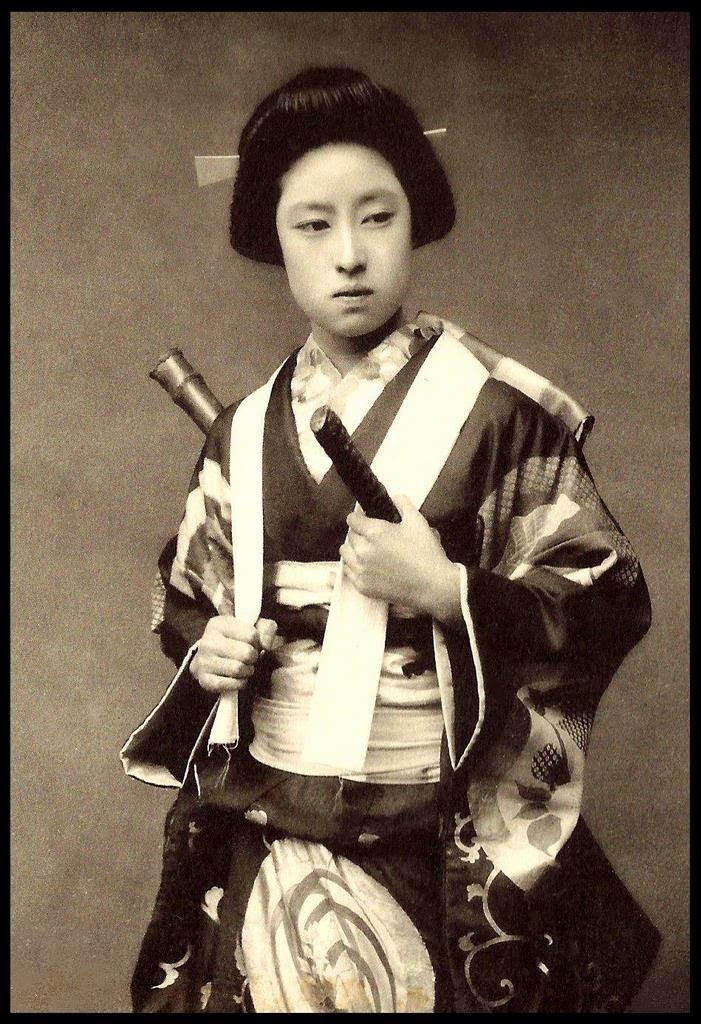
The onna bugeisha’s ethic was as purportedly as uncompromising as the samurai, and it shows in these fierce portraits from the 1800s. Although many tales of prominent onna bugeisha come from the 12th-13th centuries, one famous figure, Nakano Takeko lived in the 19th century, writes Dangerous Minds, and died quite the warrior’s death:
While she was leading a charge against Imperial Japanese Army troops she was shot in the chest. Knowing her remaining time on earth to be short, Takeko asked her sister, Yūko, to cut her head off and have it buried rather than permit the enemy to seize it as a trophy. It was taken to Hōkai Temple and buried underneath a pine tree.
Another revered fighter, Tomoe Gozen, appears in The Tale of the Heike (often called the “Japanese Iliad). She is described as “especially beautiful,” and also as “a remarkably strong archer… as a swordswoman she was a warrior worth a thousand, ready to confront a demon or a god, mounted or on foot.”
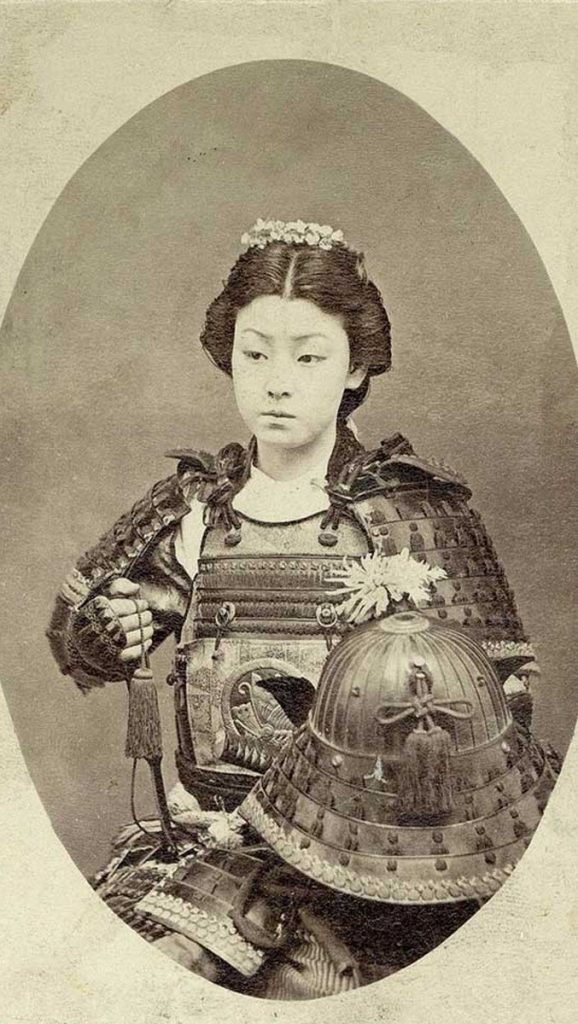
In the photos here—and many more at The Vintage News—we get a sense of what such a legendary badass may have looked like.
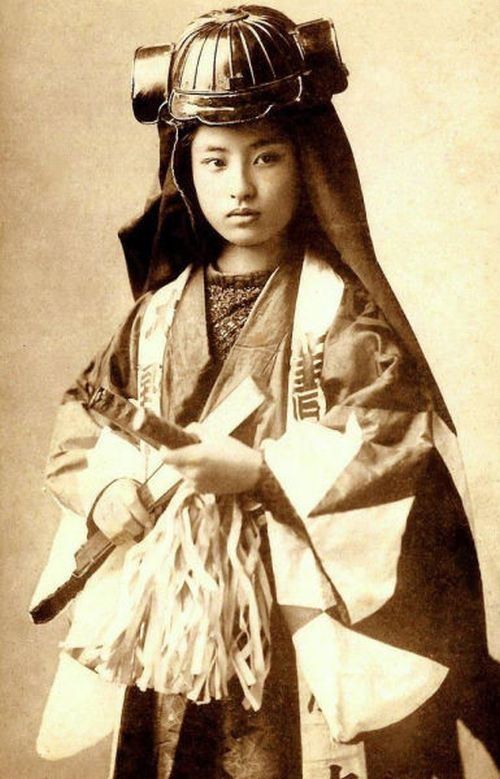
via Vintage News/Dangerous Minds
Related Content:
Hand-Colored 1860s Photographs Reveal the Last Days of Samurai Japan
How Akira Kurosawa’s Seven Samurai Perfected the Cinematic Action Scene: A New Video Essay
Josh Jones is a writer and musician based in Durham, NC. Follow him at @jdmagness


This was my response to a FB replay to my sharing of the article above. Question was “So these are not actual samurai but depictions of figures from legend? Rather like the legends of amazons?”
My answer: “I agree, there are some stretching and cherry picking of the facts. Article does not quite accurately reference the photographs — like, when and where they were taken. This are not daguerreotypes, so I am guessing this photographs are more like turn or early 20th century studio portraits. Samurai as the class were formally established during 12th century and abolished in late 1800s (from the Wikipedia article about Samurai). So any photographs of samurais after 1900s would be of “reenactment” type. Article is referencing female figures from periods proceeding full formation of male samurai order (“find their earliest precursor in Empress Jingū, who in 200 A.D.…”), which is misleading as in any formation period there are many different players before strict rules and forms are established. Are female samurai complete myth? I am sure that any culture have their Joan of Arc… However, I am finding interesting and probably worth the research/explanation from experts in Japanese culture, how is it that this girls find appealing to poise dressed as samurai/warriors, and how they managed to get away (or were they encouraged?) with in such masculine and patriarchal culture.”
Thing is, Empress Jingu is most likely a creation — she was inserted into the imperial line in Meiji period based on Kojiki, sure, but with one purpose — to strengthen the mythological and divine roots of one Japanese ethnicity that has every right to rule over its Asian neighbours. I would point to Queen Himiko as the precursor of the later female warriors, although she was not a samurai (they didn’t exist in the 3rd century). I also have doubts these pictures show actual warriors, they are most likely geishas dressed in samurai attire. Let’s not forget that during Jidai Matsuri, Tomoe Gozen is played by geisha.
Female warriors existed, but they were not prevailing.
This characterization of Clavell’s novel seems inaccurate in obvious ways. Clavell emphasized Samurai as a social class, thus including men and women alike. The readiness of Samurai women to fight to kill was plain in several scenes, and their skill with weapons was presented as high. Their statuses, both as privileged and as duty bound, paralleled those of Samurai men.
I am confident James Clavell gave a more balanced drama depicted feudal Japan than claimed by Josh Jones.
Please do a little more research, there are many prints depicting women in battle. Like any story from any culture handed down through the generations, there is some truth to the historical events. For those interested, I had an aunt that was trained in the martial arts as a woman Samuri. She was born in America and sent back by my grandfather to attend one of the academies. She told me she was picked on by the other girls for not being born in Japan. However her instructor liked her and she received additional personal instruction. Aunt Grace returned to the States before WW2 broke out and used to travel the west coast giving demonstrations with her Naginata. She taught fencing for many years at the YMCA in SF. I have her practice Naginatas. She also had a practice katana that she kept in her house. A relative that saw her preform told me; she could fight like a man”! For those doubting women Samuri, just imagine what it would be like to be chopped into pieces! Never underestimate a foe.
I don’t like this article because it gives little information about samurai woman.
Can you tell me where I may find more information on this subject? I am very interested on the history, and truth about these women. Thank you.
There is no real evidence of real female samurai. Please stop spreading misinformation.
Oi!!!
This is Badest Joke 4 Japanese.
this is Image photo of Japanese historical ladies.
in those time in Japanese superstition that taked photo parson are snatch thir soul from body,It’s truelicary bilieved.
BUUUUUUUT
Today
We Japanese Lol at your BAAAAAD Joke.
Nice Suturday Thanks a lot.
This is not a real samurai. Just the picture of fun like pop art.
Do not mislead.
Da si bine ca doar n‑o sa stau sa‑l votez pe iohanies=))
Yeah, yeah. Get the spelling of “Samurai” right first.
Samurai was abolished in Japan way way earlier before the WW2, what the heck did your “aunt Grace” did in Japan? Smoked nori seaweed?
Hi when I was in Japan many years ago I went to a museum full of armour and weapons. It is on an island in Setonaiki. I have forgotten it’s name. There were women’s armour there.
ayy yo fam
please require more in formation about the samurai